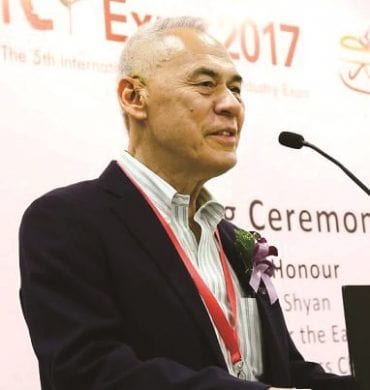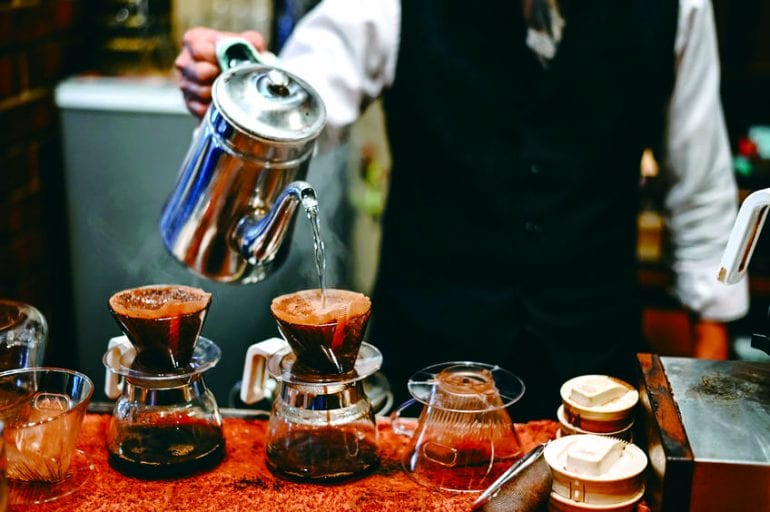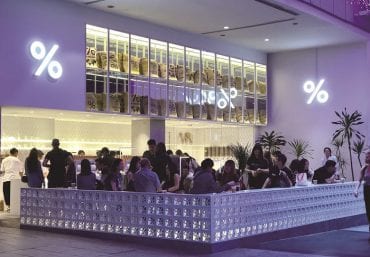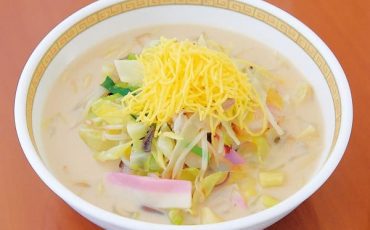Articles
Features
Jan 10, 2020
A whole LATTE LOVE
"The Japanese have raised (the siphon coffee style and the pour-over concept) to an unparalleled level of refinement and skill."
Victor Mah, President of the Singapore Coffee Association and ASEAN Coffee Federation, shares why Japanese cafés have such a hold on us.
Why are more Japanese cafés setting up shop in Singapore?
 Actually, Japanese coffee brands have had a presence in Singapore as far back as the 1980s. There was a counter café in Lucky Plaza run by a Japanese gentleman serving siphon coffee with Japanese toast and little snacks from Japan. More recently, we are seeing brands like % Arabica and Omotesando Koffee open here. is is because the younger generation are travelling to Japan — thanks in part to the advent of low-cost carriers — and after experiencing what they have to offer, they become enamoured by the concept and bring it back to Singapore. The Japanese owners themselves are baristas too, who are young (in their 30s and 40s), well-travelled and want to expand their brand as a challenge to themselves.
Actually, Japanese coffee brands have had a presence in Singapore as far back as the 1980s. There was a counter café in Lucky Plaza run by a Japanese gentleman serving siphon coffee with Japanese toast and little snacks from Japan. More recently, we are seeing brands like % Arabica and Omotesando Koffee open here. is is because the younger generation are travelling to Japan — thanks in part to the advent of low-cost carriers — and after experiencing what they have to offer, they become enamoured by the concept and bring it back to Singapore. The Japanese owners themselves are baristas too, who are young (in their 30s and 40s), well-travelled and want to expand their brand as a challenge to themselves.
How different are they from what is already available here?
In Singapore, espresso-based coffees are most commonly available. What the Japanese bring are the siphon coffee style, which they invented, and the pour-over concept, which they have further improved from the original version. They have raised these to an unparalleled level of refinement and skill. An entire industry has sprung up in Japan around the paraphernalia related to their coffee production. For example, they manufacture their own filter paper to be as natural and chemical-free as possible, and to the thickness they want — all these elements affect the taste of the coffee.

How popular are these Japanese cafés in Singapore?
They are very popular. % Arabica has an outlet each in Arab Street and Somerset, and is opening a third in Chip Bee Gardens. I think what the Japanese cafés offer is something we can relate to because we are missing it here. They are very artistic and scientific at the same time. In the pour-over method, for example, how hot the water is and the roast and grind of the coffee influence its flavour in the cup. Even how hot water is poured into the filter paper matters. If you sit and notice, the barista uses a circular motion until the water reaches a certain level and bubbles come up — we call this the bloom. The preparation process and meticulous care taken to brew the coffee
is a theatrical experience borne from the Japanese tea ceremony traditions.
What do Singaporeans enjoy most about these cafés?

Firstly, it is the visual aspect. Look at the interior of the cafés. % Arabica, for instance, is very minimalist in style. Then we enjoy observing what the barista is doing — the artistic pride they have in the process and presentation is very much influenced by the Japanese culture of artisanal craftsmanship. Today, we eat more with our eyes than our stomach. Finally, there is the taste. The Japanese style of coffee uses a lighter roast, which means you taste more of the nuances like the acidity and fruitiness of the beans.
What future trends can Singaporeans expect to see here?
I think you’ll see more smaller independent cafés from Tokyo, Osaka and Kyoto trying to come out here in joint ventures with younger entrepreneurs who are involved in the coffee industry. There is differentiation between them in the type of coffee they serve, such as where they source the beans from and how they roast them.
The Singapore Coffee Association is the Host of Cafe Asia 2020, which takes place at Marina Bay Sands Singapore, Halls B & C, from 20 to 22 February 2020
(Thursday and Friday: 10am to 6pm, Saturday: 10am to 5pm).
www.cafeasia.com.sg








